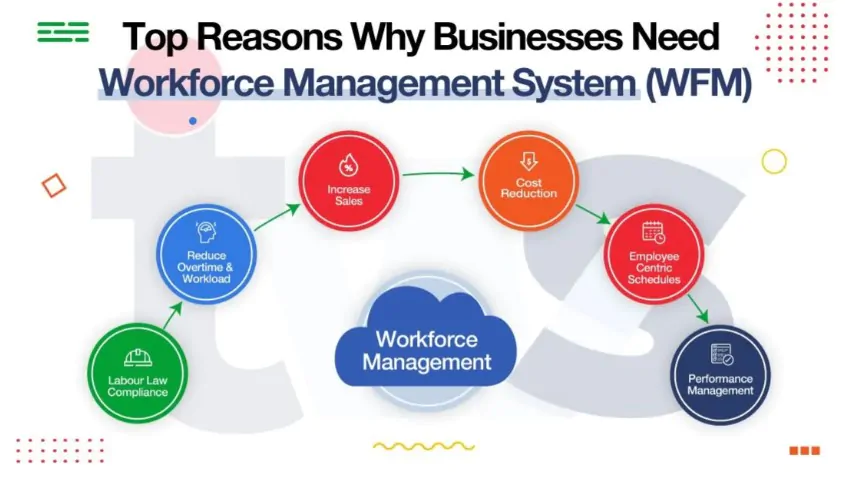Mastering Workforce Efficiency: A Deep Dive into Workforce Management Systems (WMS)
Navigating the Workforce Management Revolution
In the ever-evolving landscape of modern business, managing a workforce effectively has become a critical component of success. Organizations of all sizes and industries are turning to sophisticated solutions to optimize their labor resources and streamline their operations. Welcome to our comprehensive guide to Workforce Management Systems (WMS), where we explore the ins and outs of this game-changing technology. In this article, we’ll break down what WMS is, why it’s essential, its core components, and how it can elevate your organization’s efficiency and productivity.

Demystifying Workforce Management Systems (WMS)
What Exactly Is a Workforce Management System (WMS)?
At its core, a Workforce Management System (WMS) is a versatile software solution that empowers organizations to efficiently manage their workforce. WMS acts as a central hub for all things related to HR and labor management, providing tools to optimize employee scheduling, track time and attendance, ensure compliance, and boost overall workforce productivity.
Unpacking the Core Components of a WMS
Key Elements That Power a WMS
WMS solutions are multi-faceted, comprising several essential modules designed to streamline and enhance workforce management

Time and Attendance Management
- Precise Time Tracking: Real-time monitoring of employee hours.
- Leave Management: Efficient tracking of leaves and absences.
- Compliance Adherence: Ensuring compliance with labor laws and regulations.
Employee Scheduling
- Optimized Scheduling: Crafting schedules that meet operational needs.
- Overtime Management: Monitoring and controlling overtime hours.
- Flexibility: Adjusting schedules to accommodate changing workforce demands.
Labor Forecasting and Demand Planning
- Predictive Analytics: Harnessing data-driven insights for precise workforce predictions.
- Resource Allocation: Efficiently assigning staff to meet demand fluctuations.
- Demand Planning: Aligning staffing levels with projected demand.
Payroll and Compensation Management
- Automated Payroll Processing: Eliminating manual payroll errors.
- Benefits Administration: Effectively managing employee benefits.
- Tax Compliance: Ensuring compliance with tax regulations.
- Wage and Hour Tracking: Accurately monitoring wages and work hours.
Performance Management
- Goal Setting: Establishing and tracking employee performance objectives.
- Feedback Mechanism: Providing regular feedback and evaluations.
- Performance Analytics: Leveraging data for performance analysis.
- Skill Development: Identifying skill gaps and offering training opportunities.
Compliance and Reporting
- Compliance Assurance: Guaranteeing adherence to labor laws.
- Customizable Reports: Generating tailored reports for insightful analysis.
- Audit Trails: Maintaining records for compliance audits.
- Data Security: Safeguarding sensitive workforce data.
Tangible Benefits of Implementing a WMS
Elevating Efficiency and Productivity
The adoption of a Workforce Management System can deliver a multitude of advantages for your organization
Enhanced Efficiency
- Streamlined processes and reduced administrative overhead.
- Increased productivity due to optimized workforce allocation.
- Minimized manual tasks through automation.
Cost Savings
- Reduced labor costs through optimized scheduling.
- Mitigated overtime expenses and payroll inaccuracies.
- Decreased compliance-related fines and penalties.
Improved Employee Satisfaction
- Accurate scheduling fosters a better work-life balance.
- Equitable workload distribution ensures employee contentment.
- Real-time visibility into schedules bolsters employee engagement.
Compliance and Risk Mitigation
- Adherence to labor laws reduces compliance risks.
- Robust data security measures protect sensitive workforce information.
- Customizable reporting guarantees transparency and accountability.
Data-Driven Decision-Making
- Real-time insights enable informed workforce planning.
- Predictive analytics enhance labor forecasting precision.
- Strategic decision-making founded on performance metrics.
Scalability
- Easily adapts to accommodate organizational growth.
- Handles expansions, acquisitions, and shifts in workforce size effortlessly.
Selecting the Perfect WMS for Your Organization
Choosing Wisely for Long-Term Success
Choosing the right Workforce Management System entails a careful evaluation of your organization’s unique needs
Scalability
- Verify that the system can scale alongside your organization’s growth.
Integration Capabilities
- Assess compatibility with existing HR and ERP systems.
User-Friendliness
- Opt for an intuitive interface to facilitate swift adoption.
Customization
- Select a WMS that can be tailored to your specific needs and processes.
Vendor Reputation
- Conduct thorough research on vendor reliability, track record, and customer feedback.

Strategies for Successful WMS Implementation
Ensuring a Seamless Transition
Efficient implementation of a Workforce Management System is crucial for maximizing its potential. Follow these key steps
a. Clear Objectives
- Define implementation goals and expectations.
b. Employee Training
- Provide comprehensive training to ensure staff proficiency.
c. Data Migration
- Safely migrate existing workforce data to maintain historical records.
d. Regular Evaluation
- Continuously assess system performance and gather user feedback.
e. Adapt and Improve
- Remain open to adjustments based on user input and evolving organizational needs.
The Future of Workforce Management
Staying Ahead in an Ever-Changing Landscape
As businesses evolve and technology advances, Workforce Management Systems continue to progress. Anticipate:
- Further developments in AI and machine learning for more accurate demand forecasting.
- Greater emphasis on mobile accessibility to accommodate remote workforce management.
Conclusion: Unleashing Workforce Potential with WMS
Workforce Management Systems serve as indispensable tools that can revolutionize workforce management, boost employee productivity, and drive organizational triumph. By embracing a well-implemented WMS, organizations can optimize operations, reduce costs, and create an environment where employees thrive. Stay at the forefront of competition and unlock your workforce’s full potential with the right Workforce Management System.
ciency with the right Workforce Management System.






